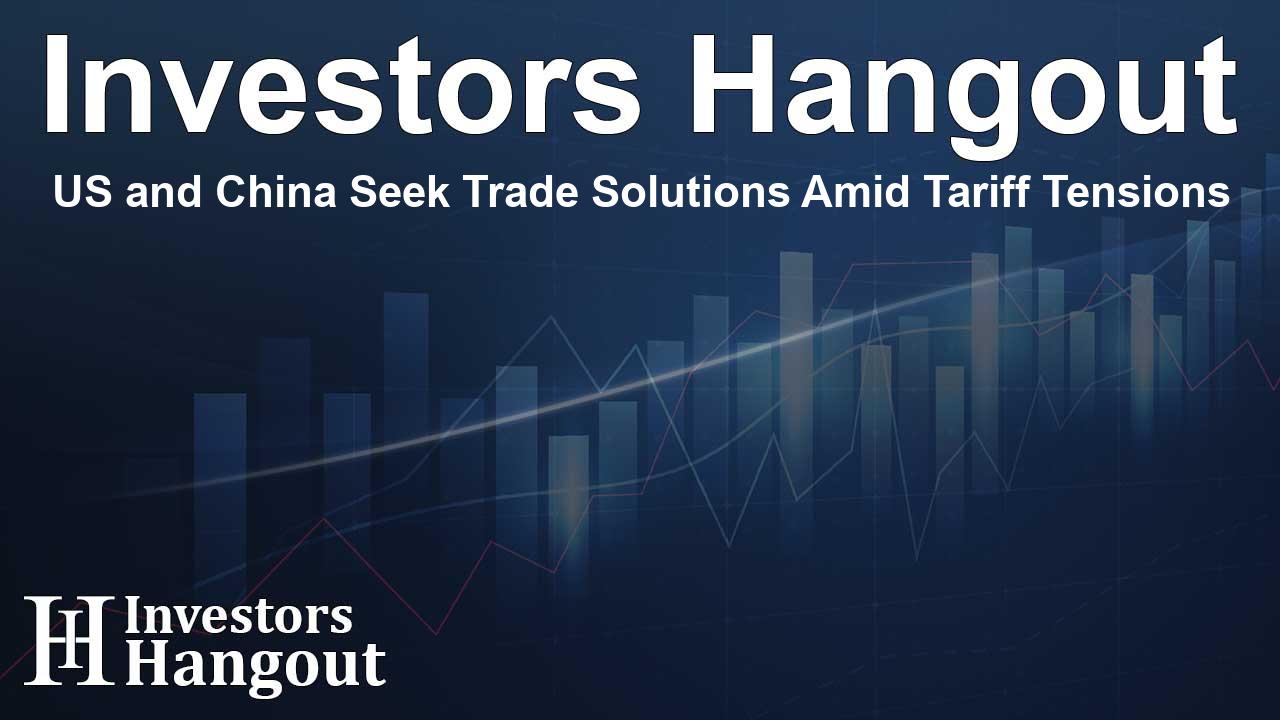US and China Seek Trade Solutions Amid Tariff Tensions

Trade Dialogues Between the United States and China
In light of ongoing trade issues, key officials from the United States and China are preparing for a crucial meeting in Stockholm aimed at resolving pending trade matters. This dialogue represents the third interaction this year between key figures in both nations, emphasizing the importance of maintaining open lines of communication during challenging economic times.
Current Tariff Landscape
Both nations are expected to uphold existing tariff levels during the discussions, while simultaneously working towards a potential meeting between the leaders later in the year. The ongoing trade situation has seen President Donald Trump propose tariffs that included a significant import tax on Chinese goods, which has had a considerable effect on global trade dynamics. Treasury Secretary Scott Bessent noted that, as it stands, the U.S. has imposed a 30% tariff on Chinese imports, while China has reciprocated with a 10% tariff.
Trump's Perspective on the Situation
According to Trump, the U.S. has carved out a ‘status quo’ deal with China, highlighting a sense of optimism amidst uncertainty. He stated, "We have the confines of a deal with China,” suggesting a level of confidence heading into the discussions in Stockholm.
Key Discussion Topics
The upcoming talks will focus on several pressing issues, including China's industrial overcapacity and the controversial fentanyl-related tariffs. The Chinese embassy in Washington has expressed a desire for enhanced consensus and cooperation, indicating a willingness to address these contentious topics constructively. Discussions might set the stage for a possible summit between Trump and Chinese leader Xi Jinping, highlighting commercial announcements and needed structural reforms.
Beijing's Stance on Tariffs
China is anticipated to advocate for the elimination of the 20% tariff linked to the fentanyl crisis. This tariff has been a point of contention, with China asserting that the root cause of the fentanyl issue lies within the U.S. Meanwhile, U.S. officials argue that China has not effectively regulated the chemicals manufactured for fentanyl production.
Broader Implications of Trade Talks
These discussions arrive during a period when Trump's administration is actively reshaping international trade relations. The negotiations are particularly significant as Trump has recently introduced a new 15% tariff trade agreement with the European Union, aimed at alleviating previous uncertainties. This move marks a reduction from the earlier threatened 30% tariff, further demonstrating Trump's maneuverings in the global trade arena.
Future Trade Agreements
In addition to European relations, Trump has proclaimed a $550 billion trade deal with Japan, projecting the creation of substantial job opportunities and improved access for U.S. products in Japanese markets. The outcomes of the Stockholm talks are poised to have a profound impact on the international economic landscape, especially given Trump's unconventional unilateral tariff strategy that skirts traditional trade negotiations.
Trump's Approach to Tariffs
Trump's approach includes plans to impose new tariff rates unilaterally on trading partners via formal notifications, pushing aside conventional negotiation processes. He has suggested that the U.S. would inform countries of impending tariff rates—potentially as high as 50%—without necessitating in-person meetings, reflecting a significant shift in international trade dynamics.
Frequently Asked Questions
What is the purpose of the upcoming US-China meeting in Stockholm?
The meeting aims to address significant trade issues, including current tariffs and trade relations between the two nations.
What tariffs are currently in place between the US and China?
The US has applied a 30% tariff on Chinese imports, while China has reciprocated with a 10% tariff on US goods.
How has Trump described the current trade situation with China?
Trump believes the US has reached a ‘status quo’ deal with China, expressing optimism about the trade dialogue.
What are the consequences of the tariff discussions?
The results of these talks could significantly influence global trade dynamics and future economic policies between nations.
What recent trade agreements has Trump announced?
Trump recently unveiled a 15% tariff trade agreement with the EU and a $550 billion deal with Japan, aimed at job creation and market access.
About The Author
Contact Lucas Young privately here. Or send an email with ATTN: Lucas Young as the subject to contact@investorshangout.com.
About Investors Hangout
Investors Hangout is a leading online stock forum for financial discussion and learning, offering a wide range of free tools and resources. It draws in traders of all levels, who exchange market knowledge, investigate trading tactics, and keep an eye on industry developments in real time. Featuring financial articles, stock message boards, quotes, charts, company profiles, and live news updates. Through cooperative learning and a wealth of informational resources, it helps users from novices creating their first portfolios to experts honing their techniques. Join Investors Hangout today: https://investorshangout.com/
The content of this article is based on factual, publicly available information and does not represent legal, financial, or investment advice. Investors Hangout does not offer financial advice, and the author is not a licensed financial advisor. Consult a qualified advisor before making any financial or investment decisions based on this article. This article should not be considered advice to purchase, sell, or hold any securities or other investments. If any of the material provided here is inaccurate, please contact us for corrections.
